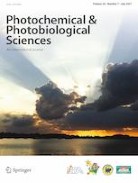|
Autores/as
Scholz, Marek; Croizat, Gauthier; Psencik, Jakub; Dedic, Roman; Nonell, Santi ; Wagnieres, Georges ; Wagnieres, Georges
|
Abstract
Photosensitizers of singlet oxygen exhibit three main types of reverse intersystem-crossing (RISC): thermally activated, triplet-triplet annihilation, and singlet oxygen feedback. RISC can be followed by delayed fluorescence (DF) emission, which can provide important information about the excited state dynamics in the studied system. An excellent model example is a widely used clinical photosensitizer Protoporphyrin IX, which manifests all three mentioned types of RISC and DF. Here, we estimated rate constants of individual RISC and DF processes in Protoporphyrin IX in dimethylformamide, and we showed how these affect triplet decays and DF signals under diverse experimental conditions, such as a varying oxygen concentration or excitation intensity. This provided a basis for a general discussion on guidelines for a more precise analysis of long-lived signals. Furthermore, it has been found that PpIX photoproducts and potential transient excited complexes introduce a new overlapping delayed luminescence spectral band with a distinct lifetime. These findings are important for design of more accurate biological oxygen sensors and assays based on DF and triplet lifetime.
|

WoS
Scopus
Altmetrics
 
|
|
Publicación
Photochemical & Photobiological Sciences, July 2021, v.20, n.7, p. 843-857
|
